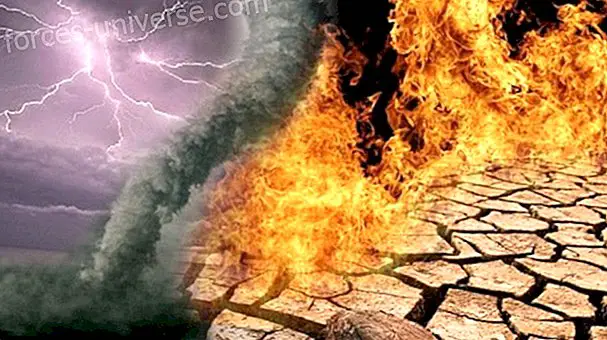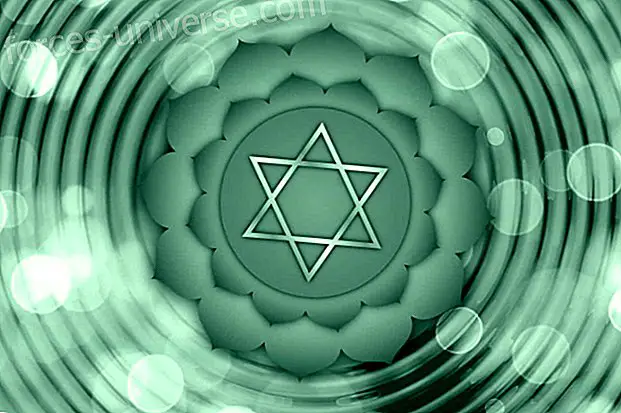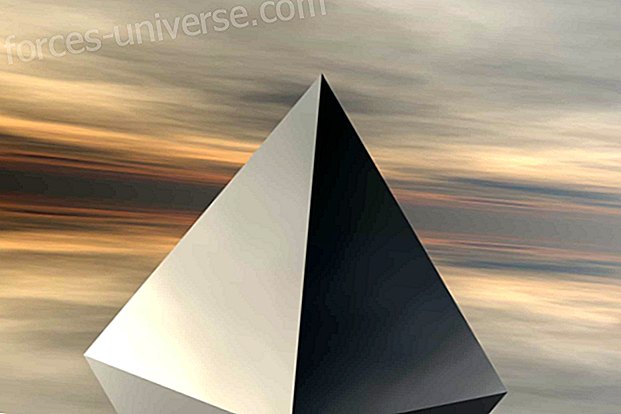
For the scientist who has always been ruled by his faith in the force of reason, the story has a nightmare ending. After climbing the mountains of ignorance, he is reaching the highest summit. And when he hoists on the last rock, he is greeted by a legion of theologians who have been sitting there for several years.Robert Jastrow
Former director of the Goddard Institute of
NASA Special Studies

Around 2500 years ago, a man named Gotama Siddartha, whom we know as Buddha, discovered through a deep state of concentration that his body was made up of tiny particles that existed only for a trillionth of a second before disappearing, and that the constant flow of this becoming of particles produced the impression of solidity to form the illusory world that the Orientals call maya.
Gotama called these small particles kalapas1, developed a model of the functioning of the mind and taught a path to Nirvana, the final liberation also known as the buddhic state, the critical state of consciousness or simply enlightenment.
During the last century, through calculations and high-precision technological instruments, our scientists have rediscovered the same thing, that matter is composed of indivisible particles that arise and disappear at a speed of 1022 times per second. They have also observed that these particles enter and leave the existence in a constant flow of vibrations, thus conforming all the things of this illusory world that we Westerners have been calling reality.
Our scientists have called these small quantum particles, laid the foundations of quantum physics and now rehearse their first models of consciousness based on it2.
Know yourself
Speaking in Western terms, Gotama the Buddha is undoubtedly the most scientific of all ascended Masters. The path he discovered when he was enlightened at age 35 and taught compassionately and tirelessly for another 45 years before ascending to the age of 80, is the most "rational", the most "scientific" and the most "logical" of all systems that have been bequeathed to us. By this I do not mean of course that this is the best way, I just want to express that despite being considered a traditionally eastern path, it is perhaps the easiest to understand for our Western minds conditioned by the parameters for observing reality rather than for devotion to faith.
As recommended by the first inscription of the temple of Delphi, Concend to yourself, all that Gotama Siddartha the Buddha did was to observe with total attention and equanimity human consciousness Its own conscience. That is, he observed himself until he got to know each other.
The mind according to Buddha
From this observation he developed, among other things, a model of the mind seen as a process that is based on the uninterrupted succession of four main functions:
1) consciousness (vi ana): the receiving part of the mind that merely registers the occurrence of things
2) perception (sa a): the evaluating party that judges the incident, classifying it and judging it as positive or negative
3) sensation (vedana): the part that generates a pleasant or unpleasant body sensation according to the result of the factual evaluation.
4) reaction (sankhara): the part that reacts with aversion or attachment depending on the sensation.
According to Gotama's observation, these four mental functions are still shorter than the ephemeral kalapas that make up material reality, so that we are never aware of what happens every time that the bodily senses come into contact with something. For example, if the sound produced by the words You are useless comes to the ear!, immediately the consciousness registers the fact, the perception classifies the words as something negative and we experience an unpleasant bodily sensation that makes us react producing a dislike sankhara against what we are hearing, for we want that which displeases us to stop; On the contrary, if we hear a compliment that the perception evaluates as something positive, we experience a pleasant bodily sensation and generate a pleasant sankhara wishing for more of that which has brought us pleasure.
The source of suffering
The memory of all the sankaras that a mind has produced is accumulated in the body and this accumulation is generating more and more marked and automatic reactions, since it heals, the perception In addition, take advantage of the collection of past experiences to evaluate and classify any new phenomenon.
Past reactions become benchmarks with which we try to understand a new experience that we judge and classify according to our past sankharas. This is how the old reactions of greed and aversion condition our perception of the present and we are involved in a vicious circle, in what is known as the wheel of Samsara. In such a way that karma, the true cause of suffering, is a product of the conditioned reaction of the mind.
Vipassana: a patient path to liberation
Gotama the Buddha said: “Any suffering that arises, has a reaction for cause. If all reactions cease, then there is no more suffering. ”3 Among the tools he taught his contemporaries to stop the reaction and achieve liberation, there is a simple and powerful technique to develop the ability to contemplate things as they are. This technique is called Vipassana which means "full vision" and consists in working gradually eroding the conditioned responses until the mind is completely liberated. A rational and patient path.
To practice Vipassana you just have to observe with attention and equanimity the sensations throughout the body. These sensations are experienced due to the infinite variety of combinations of the basic qualities of matter - mass, cohesion, temperature and movement - that subatomic particles called kalapas present.
When the ability to observe any sensation without reacting to it is acquired, the mind automatically begins to penetrate beyond the apparent reality of pain until it reaches its subtle nature that consists only of vibrations that arise and disappear at every moment. This is how the awareness is acquired that everything has a certain duration time past which ends and something new emerges. This only constant that is change, is called anicha, impermanence. When the subtle reality is finally experienced, the consciousness of the anicha allows one to experience the futility of attachment and the liberation of suffering is achieved.
Immediate benefits of Vipassana
Among the secondary consequences of practicing this meditation technique are mental relaxation and the elimination of old accumulated sankharas.
By objectively and dispassionately observing any bodily sensation, as long as there is no reaction, no new sankhara is created and any old sankhara that is experienced as a sensation disappears. The next moment another sankhara of the past arises in the form of a sensation and if there is no reaction, it also disappears. In this way, while observing carefully everything that happens while maintaining equanimity, accumulated reactions are allowed to reach one after another the surface of the mind manifesting itself as sensations that are gradually being eradicated.
Medium and long term results
As a secondary consequence of learning to observe sensations without reacting to them, the mind reprograms itself allowing itself to act with full awareness instead of automatically reacting to events.
That is why all the effort is based on learning not to react, not to produce a new sankhara when the sensation appears and the displeasure or pleasure begins. If there is awareness in that ephemeral moment and the reaction stops, one merely observes the sensation, it does not intensify until it becomes desire or aversion and does not become an intense emotion that ends up dominating the conscious mind, but rather It just disappears.
Although at first this awareness is achieved only for a brief moment, these moments are very powerful because they launch an inverse process, that of purification. And so little by little, with practice, the seconds become minutes and minutes into hours until the old habit of reacting is finally eradicated and the mind always remains at peace. This is an effective way in which suffering can be stopped, as Gotama the Buddha proved.
The Vipassana of SN Goenka
Legend has it that the golden land, the territory of what is currently Burma, was destined since the time of Gotama the Buddha to keep the precious gem that is the Vipassana keeping its technique intact until, after two and a half millennia, he returned to India to expand from there to the whole world.
Coinciding with this legend, it was precisely the Burmese industrial millionaire, NS Goenka, who began expanding Vipassana in 1976.
With an incurable migraine, after attending the best clinics around the world, this noble man was recommended to try a meditation technique taught by some Burmese teachers. Fourteen years later, becoming a Vipassana Master, he traveled to India to teach this technique to his parents and a small group of his friends, who in turn wanted their own relatives to receive the same instruction from Goenka. And there began the long chain that has led to disseminate Vipassana as gunpowder throughout the Hindu territory and that has already begun to expand practically throughout the globe.
Vipassana intensive courses
If one wants to receive the instruction of Vipassana with the full force of its purity, it is necessary to take an intensive 10-day course by Goenka or one of his or her Assistant Teachers. During this time, the student lives the life of a monk since on the one hand he accepts to abide by the rules of the course practicing various abstinence and on the other, he subsists of charity since during the whole period of training he will be lodged, served and fed thanks to The goodwill of other former students who, willing to share the benefits of this technique with others, have donated money, time and effort to make new courses possible.
Temporarily become a monk or nun, the student of Vipassana strictly observes sila (ethical conduct), practice samadhi (concentration of the mind), and acquires pañña (wisdom).
The Code of Discipline stipulates the following five precepts:
1. Refrain from killing any creature
2. Refrain from stealing
3. Refrain from all sexual activity
4. Refrain from lying
5. Refrain from all kinds of intoxicants
Likewise, the discipline, guidance and instructions of the teacher must be observed, observe absolute silence during the 10 days (except during interviews with teachers or in emergencies), refrain from any physical or visual contact with classmates, comply with vegetarian food, deprived of any distraction or contact with the outside, respect the schedule that begins at 4:30 in the morning and ends at 9 at night, and suspend during the entire course all kinds of religious exercise and practice that normally carry out.
What is not Vipassana
The technical introduction brochures that one should read before enrolling in a course ensure that Vipassana is not:
-A rite or liturgy based on blind faith
-An intellectual or philosophical entertainment
-A rest cure, a vacation or a social club
-A flight from the problems and tribulations of daily life
I would add that it is not about adhering to an organized religion, nor to the cult of the figure or the teachings of the Buddha, since both the technique and the principles are universally applicable and I, as a practicing Christian that I am, have not found anything that contravene or undermine my beliefs, but on the contrary, I have seen them strengthened by finding that although the paths are different, the goal is one and the same.
My personal experience
Each individual is a universe different from the other depending on the various factors that make up his life path. That is why during a Vipassana course, although there are usually quite a few things in common, what each person experiences may have few coincidences or differ completely from what I then propose to tell, that is, a brief synthesis of my experiences during three courses that I have attended in Dhamma Neru, the Spanish Vipassana site located in Santa Maria de Palautordera, Catalonia.
First course
It took place during the summer of 2000 and meant a revolution in my life. In addition to learning the foundations of Vipassana and beginning to deepen and practice the teachings of Gotama the Buddha - thanks to the fun and enriching speeches of Goenka presented on video every night -, I obtained many keys to my personal growth due to the combination of silence, discipline, technique and a series of dreams of a lucidity he had never experienced.
I had the opportunity to see my mind naked for the first time. He observed both his instability and indomestication as his potential and his power. And although I had already made considerable progress in identifying my most entrenched patterns of pain management, during these ten days I saw them in action and managed to devise some techniques for deactivate them
It was a hard course for me because in addition to experiencing physical pain that my tension magnified, I observed several issues that I had not been able to or had not wanted before watch. Nonetheless, I left there deeply transformed, radiant with happiness and extremely grateful, as practically all my classmates and classmates, among whom were housewives, lawyers, professors, engineers, entrepreneurs, therapists, young students and some retirees.
Second course
In this second course that started in the fall, I went as a servant. In addition to enjoying the relief and satisfaction that comes from leaving oneself to look for others, I managed to solve some doubts about the technique that helped me establish myself more in everyday practice . I also had the opportunity to appreciate the enormous effort involved in maintaining the administrative infrastructure of this impressive organization based on compassion, selfless service and the desire to share.
To be in service during a Vipassana course is to be involved in a cosmopolitan cultural mosaic with people who share the concern of moving from theory to practice of a life more in accordance with love and laws of the nature; people who synchronously meet to help each other identify and work in their respective behavioral patterns. It is a highly recommended experience.
Third course
It was done in winter, during the end of last year and the first days of the present. This course was totally different than the first, this was not hard, on the contrary, it was a great joy. Now, free of the tension produced by the unknown and much more relaxed in my perfectionist effort to do things right, I finally managed to look with equanimity and attention to the truth about pain.
Gotama the Buddha taught that there are three types of wisdom: suta maya paña, the wisdom received through others, either through the spoken or written word; Mayan tape pañña, the intellectualized wisdom that one obtains by deduction or by acceptance of the knowledge that one reads or hears; and bhavana maya pañña, which is the wisdom experienced by oneself. All three are important and sequentially necessary. In my first course I received and intellectualized the practice of Vipassana and began to experience it timidly, while in this second, I managed to experience it more fully.
All my life I had an intense aversion to physical pain and had been running away from it, so during my first course I started facing him and enduring him with as much equanimity as possible. However, in this second course, rather than face it, I managed to see it as the accumulation of sensations that it really is and I proved for myself that what the Buddha says is totally true.
I used to see it as a concrete and intensely unbearable sensation, which my mind judged so undesirable that it was crushed and generated even more unpleasant sensations to which I reacted with deranged despair by literally doing anything to stop them.
By stabilizing my mind and achieving the concentration and equanimity necessary to witness the pain sensations without reacting to them, I was able to pass behind the curtain of my fear to look directly. I observed that in reality the pain is composed of several different sensations that have a greater intensity focus from which that intensity decreases until it fades away. The most intense core is composed of sensations that seemed to me as cold as the contact of the iciest water and as heavy as lead. Sensations that, together, give the impression of coherence; and this accumulation of sensations is crossed from time to time by other linear sets of pulsating sensations that momentarily cross different zones.
I managed to observe these diverse sensations in constant change until my fear of them completely dissolved and after a few moments of that dissolution, the whole block of cold, heavy, coherent and pulsating sensations seemed to explode to give way to a cluster of tingling sensations that vibrated with great intensity and speed, until after a few moments, these sensations also vanished completely leaving the area momentarily free of any sensation my mind could perceive.
And so I experientially verified the truth about the pain and impermanence of things. I found that the fear that the mind has for pain is what extends the period of its duration and sharpens it. I saw that a relaxed mental attitude allows one to surrender to observe with equanimity the passing of things as they are. And from this experiential wisdom, I developed new intellectual wisdom extrapolating this knowledge to my way of acting in the face of emotional pain, of which my attitude to physical pain has been a faithful reflection. Now I have to apply this knowledge in my daily life to continue developing more bhavana maya pañña.
A cordial invitation
As a result of my desire to share with friends, acquaintances and strangers, something that has enriched me so much and on such different levels, is that I write these lines. I invite you that you are reading this to give yourself the opportunity to experience a Vipassana course for yourself. Although finally your path to liberation is another, it is always helpful to explore this path before deciding in which well you are going to commit to digging to find the Source.
Vipassana courses are not advertised or promoted in any way, all the publicity they receive is from word of mouth, from someone who took it to someone in whom one thinks they could share the same benefits one has received. And this is how the enrollment of these courses has been growing exponentially throughout the world, in such a way that in Santa Maria de Palautordera, for example, you must request registration several months in advance to take place in one of the courses planned for the year or be lucky enough to arrive with your suitcase made and hope to replace any last minute cancellation.
About true happiness
I don't want to end this apology of Vipassana without a quote from William Hart, a professor of this technique:
When one knows true happiness, no matter what happens, whether within the microcosm of one's own mind and body, or in the outside world, one is able to face it, not with tension, not with repressed desire or aversion to Hard pains, but with complete ease, with a smile that emerges from the deepest of the mind. In no pleasant or unpleasant situation, dear or unloved, one has anxiety, one feels totally safe, secure in the understanding of impermanence. This is the greatest blessing.
Knowing that you are your own owner, that nothing can affect you, that you can accept with a smile anything that life holds for you; This is the perfect balance of the mind, this is the true liberation. This is what can be achieved here and now with the practice of Vipassana meditation ...
By: Karina Malpica
January 2001, Blanes, Girona
1 Kalapa means "indivisible unity" in the Pali language, which was the language spoken by Gotama Siddatha the Buddha.
2 For example, that of Danah Zohar in his books The quantum self, "human nature and consciousness defined by modern physics" (Plaza & Janes), and Spiritual Intelligence coming soon.
3 Hart, William: La Vipassana, the art of Buddhist meditation, Edaf, Madrid, 1994
To know more about the topic Mind-Surf recommends:
* Hart, William: La Vipassana, the art of Buddhist meditation, Edaf, Madrid, 1994
* Doing time, doing Vipassana, Karuna Films, 1997. Documentary winner of the 1988 Golden Spire Award.
* http://www.neru.dhamma.org/ The official website of the Vipassana Meditation taught by Goenka.
* Dhamma Neru: Camí Can Ram (Els Bruguers), Apdo Postal 29, 08460, Santa Maria de Palautordera, Barcelona. Tel: 93 848 26 95 Mobile: 629 14 36 60 e-mail: website: dhammaneru.iespana.es/
- Seen in:






